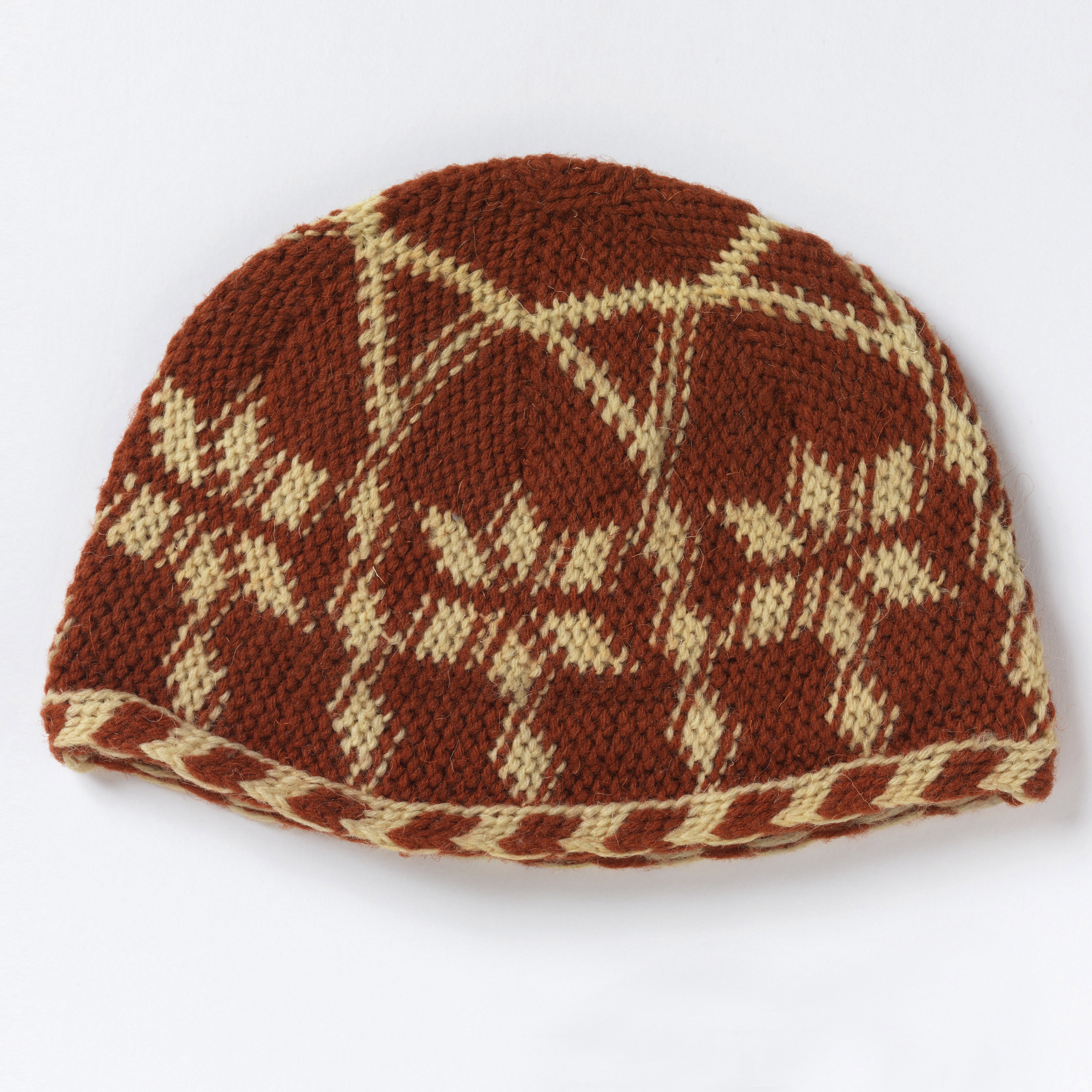This wool cap, probably intended for a man, was made in the first half of the 20th century by the indigenous inhabitants of Morocco, the Amazigh people (also called the Berbers), who make up 40-60 percent of the population and have a language and culture distinct from Arabs. Amazigh textiles were mainly produced by women,...
This nightcap, dating from the late 17th or early 18th century, was made using a technique called crewel, a type of embroidery worked with wool yarn on linen. Since men had shaved heads or very short hair to accommodate their wigs during this period, they wore caps like this one to keep warm after their...
In the seventeenth and eighteenth centuries, a lace cap with a pair of long streamers was a popular headdress for women. The most fashionable cap streamers were made of delicate bobbin or needle lace. These cap streamers or lappets were sometimes pinned up, but often they hung loose about the sides or back of the...


